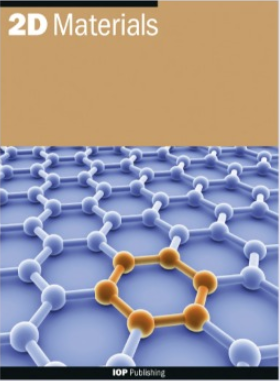二硫化钼上二维超导体的瞬态涡动力学和玻色金属的演化
IF 4.3
3区 材料科学
Q2 MATERIALS SCIENCE, MULTIDISCIPLINARY
引用次数: 0
摘要
物理现象的真实特征被认为随着系统变得无无序而得到加强。相比之下,二维(2D)超导体在无钉钉状态下将变得脆弱和电阻,远离极限I→0,B→0。有趣的是,那些通过配对、凝聚来实现超导性的漩涡,从而减少了经典耗散,使T→0的量子涨落驱动的状态具有电阻性。虽然人们正在探索更清洁的系统以进行技术改进,但在弱电场和磁场的影响下,二维超导体会变成电阻,这对量子技术产生了深远的影响。二维金属基态超出了玻色子和费米子系统的共识,它的起源和性质需要一个全面的理论认识,并辅以深入的实验。迄今为止,对涡旋动力学对输运性质影响的实时观测一直是难以捉摸的。我们探索了在离子液体门控的少层MoS 2样品上形成的低粘性、清洁的二维超导态的性质和命运。涡核的耗散、弹性脱羽、涡间相互作用以及随后的涡格动力学在输运特性中留下了瞬态特征。瞬态性质的温度和磁场依赖性以及磁电阻的噪声特性证实了量子涨落是造成玻色金属态和超导态脆弱性的唯一原因。本文章由计算机程序翻译,如有差异,请以英文原文为准。
Transient vortex dynamics and evolution of Bose metal from a 2D superconductor on MoS2
Abstract The true character of physical phenomena is thought to be reinforced as the system becomes disorder-free. In contrast, the two-dimensional (2D) superconductor is predicted to turn fragile and resistive away from the limit I → 0, B → 0, in the pinning-free regime. It is intriguing to note that the very vortices responsible for achieving superconductivity by pairing, condensation, and, thereby reducing the classical dissipation, render the state resistive driven by quantum fluctuations in the T → 0. While cleaner systems are being explored for technological improvements, the 2D superconductor turning resistive when influenced by weak electric and magnetic fields has profound consequences for quantum technologies. A metallic ground state in 2D is beyond the consensus of both Bosonic and Fermionic systems, and its origin and nature warrant a comprehensive theoretical understanding supplemented by in-depth experiments. A real-time observation of the influence of vortex dynamics on transport properties so far has been elusive. We explore the nature and fate of a low-viscous, clean, 2D superconducting state formed on an ionic-liquid gated few-layered MoS 2 sample. The vortex-core being dissipative, the elastic depinning, intervortex interaction, and the subsequent dynamics of the vortex-lattice leave transient signatures in the transport characteristics. The temperature and magnetic field dependence of the transient nature and the noise characteristics of the magnetoresistance confirm that quantum fluctuations are solely responsible for the Bose metal state and the fragility of the superconducting state.
求助全文
通过发布文献求助,成功后即可免费获取论文全文。
去求助
来源期刊

2D Materials
MATERIALS SCIENCE, MULTIDISCIPLINARY-
CiteScore
10.70
自引率
5.50%
发文量
138
审稿时长
1.5 months
期刊介绍:
2D Materials is a multidisciplinary, electronic-only journal devoted to publishing fundamental and applied research of the highest quality and impact covering all aspects of graphene and related two-dimensional materials.
 求助内容:
求助内容: 应助结果提醒方式:
应助结果提醒方式:


